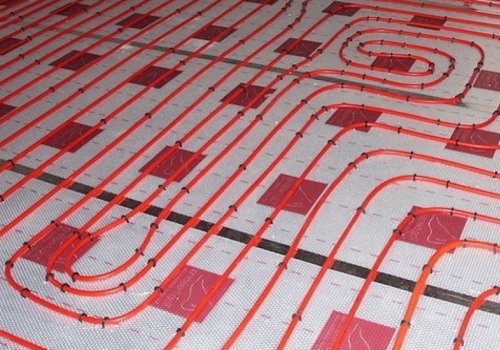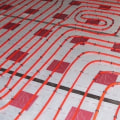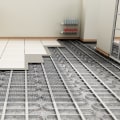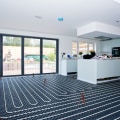Usually hydronic underfloor heating systems are not able to do so and it takes much longer to warm up, forcing homeowners to leave the system turned on continuously, so they consume more energy. However, they are still efficient in terms of heat retention. In a nutshell, yes, however, it depends on the season.
underfloor heating
systems are very quiet.You don't have to hear a loud oven turn on and off all the time.
Underfloor heating
(specifically wet underfloor heating) works differently than radiators. Rather than expelling the hottest possible heat, underfloor heating uses a wider area of low-temperature heat to keep rooms at the right temperature. Underfloor heating is less responsive than radiators (it takes longer to warm up and cool), so it usually has to work for longer periods.The short answer to “Can you heat your whole house with underfloor heating? is it yes. In theory, as long as you have a floor, you can use underfloor heating. The heating system goes directly to the ground, heats water or uses electricity in a pipeline infrastructure. Not all types of flooring can be used with underfloor heating.
In the past, popular wisdom held that only certain materials were the right accompaniments for a radiant system. While professionals approved tiles, stone and concrete, they warned against hardwoods and carpets. Fortunately, like any other technology, radiant heating has come a long way in recent years. Today, you can combine Warmboard panels with virtually any commonly used flooring material.
Warmboard offers you total freedom of design. You don't have to make any sacrifices to be comfortable. Some will just leave the system running all winter long, it just depends on how you like to use your system. If you have a thermostat that is set to read the temperature of the floor, most people are comfortable at 75 degrees.
In fact, advances in heated floors have made leaps and bounds in recent years, and keeping the floor warm underfoot is a luxury. Before it was installed, I asked the plumber to check with the manufacturer's sales representative that he would heat the room enough and he said yes, that's his purpose. In addition, the heating sensor or thermostat could malfunction, which is a much simpler solution than problems with the wires or pipes themselves. According to BEAMA, a house equipped with modern heating controls can save a family up to 40% on their energy bills.
Underfloor heating is created by laying cables or pipes under the floor, heated by electricity or hydronic. Even the best insulated house loses heat through walls, windows and doors, even more so when people come and go. First of all, make sure that the hot water control of the boiler is set correctly, especially if you have a modern condensing boiler, which can recover heat that would otherwise be lost as waste gases. You can even save money on your energy bills, as underfloor heating is up to 25% more efficient than radiators.
Again, it will heat the water to a higher temperature to cool it later, which is a waste. If you have a measured floor temperature of between 90 and a half, you are measuring poorly or are using an extremely inadequate water temperature for your radiant system. Unfortunately, this is likely to raise the floor too high if you already have built-in units in your kitchen. Because of this difficulty, some companies have begun to meet the demand for radiant heat that does not require a floor overhaul.
.











